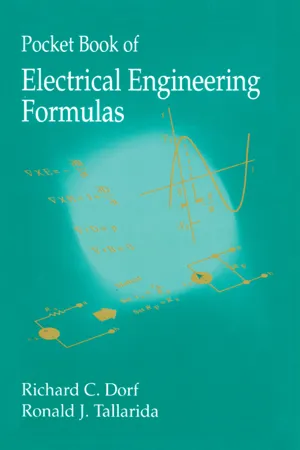Coordinate Systems
Coordinate systems are mathematical frameworks used to locate points in space. They consist of axes, typically labeled x, y, and z, and a point's position is defined by its distances from these axes. Common coordinate systems include the Cartesian coordinate system, polar coordinate system, and spherical coordinate system. These systems are essential for representing and analyzing geometric shapes and physical phenomena.
5 Key excerpts on "Coordinate Systems"
- eBook - ePub
- Joy Ko, Kyle Steinfeld(Authors)
- 2018(Publication Date)
- Routledge(Publisher)
...In SketchUp, for instance, every object is associated with a local set of axes, and any time an object is selected by the user, the active “drawing axes” (SketchUp’s term for a coordinate system) appears on the screen and automatically aligns to these directions. Most CAD packages such as AutoCAD maintain a single world coordinate system that defines the underlying space of the model, but also allows local Coordinate Systems defined at arbitrary positions and orientations within this world space which are typically positioned for convenient drafting or modeling. This is done either automatically (such as when an object is selected for manipulation in SketchUp) or at the explicit request of the user (such as when the “CPlane” is reoriented in Rhinoceros). We have already seen an example in which the calculation of local coordinates in a user-defined construction plane is achieved via projection onto the axis vectors. The terms and interfaces found in CAD systems suggest an intimate link between Coordinate Systems, vectors, and the space they inhabit. In this section, we establish the mathematical foundations that unpacks this relationship. We do so by using two critical concepts from the mathematical field of linear algebra. The first is the idea of a span, which refers to the spatial extent that we may “reach” using a given set of vectors and a limited means of manipulation. Another is the concept of a basis which is any minimal set of vectors which spans a given space. By understanding these two concepts, we are able to achieve a deeper grasp of Coordinate Systems in CAD, thereby becoming more empowered users of computational geometry in general. As a first step toward that end, we return to our representation of a vector as an arrow. Basis and Coordinates We already know that we may add and scalar multiply any set of vectors ⃗υ 1,⃗υ 2,…,⃗υ n, in any order of operation, and that these operations will result in another vector...
- eBook - ePub
- Donald W. McRobbie(Author)
- 2020(Publication Date)
- Wiley-Blackwell(Publisher)
...Appendix 2 Maths toolkit Coordinate Systems Cartesian coordinates The Cartesian coordinate system is the usual orthogonal “real world” system comprising axes x, y and z (Figure A2.1 a). The axes are depicted in the right‐handed orientation with +x coming out of the page, y is left‐right, and z vertical. The unit vectors for x, y, z are î, ĵ,. The incremental elements are dx, dy, dz. The incremental volume dV = dx dy dz Figure A2.1 Coordinate Systems showing the positional vector r and its components to a point P : (a) Cartesian; (b) cylindrical polar; (c) spherical polar. Cylindrical polar coordinates Cylindrical polar coordinates are convenient for situations with cylindrical symmetry, e.g. solenoidal coils. The coordinates are r, θ, z where r is the radial distance in the x–y plane, orthogonal to the z‐axis (Figure A2.1 b). In Cartesian coordinates: (A2.1) and (A2.2) The unit vectors are rˆ, θˆ, kˆ The incremental elements are dr, rdθ, dz so that (A2.3) The incremental volume is (A2.4) Spherical polar coordinates Spherical polar coordinates are convenient for situations with spherical symmetry. The coordinates are ρ, θ, φ where ρ is the radial distance from the origin to a point of interest P, θ is the angle from the x–y plane as for cylindrical coordinates and φ is the angle from the x–y plane to P (Figure A2.1 c). In terms of Cartesian coordinates: (A2.5) In terms of cylindrical coordinates: (A2.6) The unit vectors are The incremental elements are dρ, ρdθ, ρ sin θ dφ so that (A2.7) The incremental volume is (A2.8) VECTOR ALGEBRA Vectors, denoted by bold typeface have scalar components in the each of the directions defined by the coordinate system...
- Caryl Lorandini(Author)
- 2021(Publication Date)
- Barrons Educational Services(Publisher)
...The point of intersection of the axes is called the origin and has coordinates (0, 0). Coordinates An ordered pair of numbers that identifies the location of a point on a coordinate plane, written as (x, y). Origin The point on the coordinate plane where the x - and y -axes intersect; has coordinates (0, 0). Quadrant One of four sections of a coordinate grid separated by horizontal and vertical axes; they are numbered I, II, III, and IV, counterclockwise from the upper right. x-axis The horizontal axis; the line whose equation is y = 0. x-intercept The point where a graph of an equation crosses the x -axis when (y = 0). y-axis The vertical axis; the line whose equation is x = 0. y-intercept The point where a graph of an equation crosses the y -axis when (x = 0). 12.1 What Is Coordinate Geometry? The x -axis runs horizontally, which is left and right. The y -axis is perpendicular to the x -axis and runs vertically, which is up and down. The axes divide the coordinate plane into four equal regions called quadrants. They are numbered with Roman numerals by starting at (+, +) the top-right quadrant and moving in a counterclockwise direction. The points on the plane are found by using ordered pairs of (x, y). The x always comes before the y, just like in the alphabet. Remember, the intersection of two lines is called a point. You can use lines or your finger if it helps. Think, “Find the elevator,” and then go up or down. The point (2, 3) is located by moving from the origin 2 to the right and 3 up. An ordered pair gives direction and distance. The direction is from the sign and the distance is the number. EXAMPLE 12.1 1) Graph and label each of the following points on the coordinate plane...
- eBook - ePub
- Richard C. Dorf, Ronald J. Tallarida(Authors)
- 2018(Publication Date)
- CRC Press(Publisher)
...4 Analytic Geometry 1. Rectangular Coordinates The points in a plane may be placed in one-to-one correspondence with pairs of real numbers. A common method is to use perpendicular lines that are horizontal and vertical and intersect at a point called the origin. These two lines constitute the coordinate axes; the horizontal line is the x-axis and the vertical line is the y-axis. The positive direction of the x-axis is to the right whereas the positive direction of the y-axis is up. If P is a point in the plane one may draw lines through it that are perpendicular to the x- and y-axes (such as the broken lines of Figure 4.1). The lines intersect the x-axis at a point with coordinate x 1 and the y-axis at a point with coordinate y 1. We call x 1 the x-coordinate or abscissa and y 1 is termed the y-coordinate or ordinate of the point P. Thus, point P is associated with the pair of real numbers (x 1, y 1) and is denoted P (x 1, y 1). The coordinate axes divide the plane into quadrants I, II, III, and IV. FIGURE 4.1. Rectangular coordinates. 2. Distance between Two Points; Slope The distance d between the two points P 1 (x 1, y 1) and P 2 (x 2, y 2) is d = (x 2 − x 1) 2 + (y 2 − y 1) 2 In the special case when P 1 and P 2 are both on one of the coordinate axes, for instance, the x-axis, d = (x 2 − x 1) 2 = | x 2 − x 1 |, or on the. y-axis, d = (y 2 − y 1) 2 = | y 2 − y 1 |. The midpoint of the line segment P 1 P 2 is (x 1 + x 2 2, y 1 + y 2 2). The slope of the line segment P 1 P 2, provided it is not vertical, is denoted by m and is given by m = y 2 − y 1 x 2 − x 1. The slope is related to the angle of inclination α (Figure 4.2) by m = tan α Two lines (or line segments) with...
- F. Xavier Malcata(Author)
- 2020(Publication Date)
- Wiley(Publisher)
...13 Analytical Geometry In classical mathematics, analytical geometry (also known as coordinate geometry) consists of the study of geometry using a coordinate system as tool – according to which every point is represented by a set of (numerical) coordinates; this approach is widely followed in physics and engineering to manipulate equations of lines and geometric figures, laid on a plane or developing in space. It was independently invented by René Descartes, a French philosopher and mathematician of the seventeenth century; and Pierre de Fermat, a French lawyer and mathematician, who also lived in the seventeenth century – and was further credited for early developments that eventually led to infinitesimal calculus. Of particular interest for process engineering are straight lines and conical curves, and determination of the length of a curve and the surface area bounded by a plane figure, as well as the volume and the outer surface of a solid of revolution; all these topics will be addressed below to some depth. 13.1 Straight Line Despite constituting a primitive concept in mathematics (along with point and plane), a straight line may be seen as the simplest sequence of adjacent points containing (specifically) two given points, say, A and B – so its defining equation should account for a mere two degrees of freedom. Recalling the simplest algebraic functions available – i.e. of the polynomial type as per Eq. (2.135) or Eq. (2.136), one is faced with an equation reading (13.1) where a 0 and a 1 denote the independent and linear coefficients of said polynomial; this situation is illustrated in Fig. 13.1. If the aforementioned two points are characterized by coordinates A (x 0, y 0) and B (x 1,y 1), then they will belong to the straight line at stake provided that (13.2) and (13.3) are simultaneously satisfied – as obtained from Eq. (13.1) after setting x = x 0 and y = y 0, or x = x 1 and y = y 1, respectively; solution of the set of Eqs...




